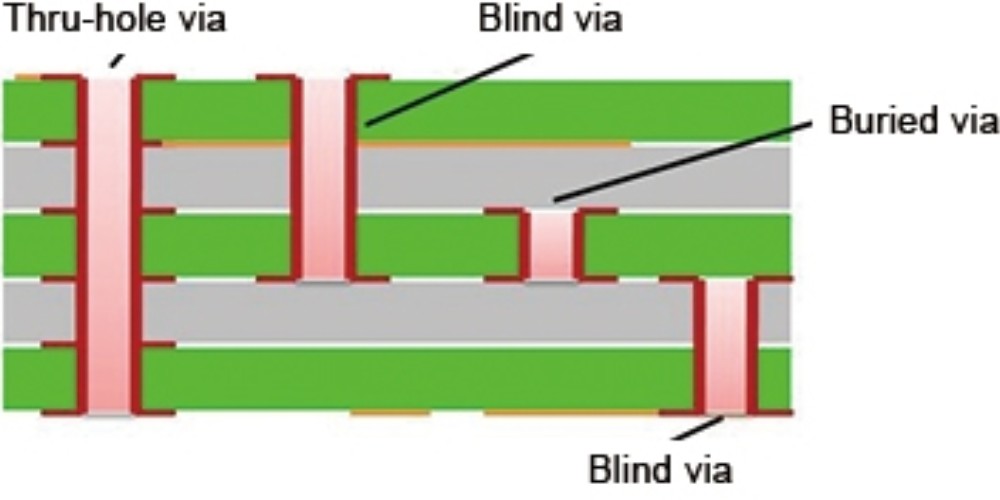Introduction
For thousands of years, humans have dug tunnels beneath the surface of the Earth for various purposes, from mining precious metals and stones to creating underground transportation routes. In ancient times, many of these subterranean passageways were dug for ritualistic or strategic reasons that today seem mystical and intriguing.
Across Europe, a vast network of ancient tunnels has been discovered over the centuries, containing everything from sites of spiritual importance to hidden escape routes used during war. The history buried within these tunnels provides a fascinating glimpse into the past, revealing pieces of forgotten knowledge and displaced artifacts left behind centuries ago.
Underground Temples and Tombs

The Paris Catacombs
One of the most famous underground tunnel networks is the Paris Catacombs in France, which consists of over 200 miles of labyrinthine quarries beneath the capital city. The tunnels were initially dug out to supply building materials in Roman times, but in the late 18th century, they were repurposed to serve as an overflow ossuary for numerous Parisian cemeteries. An estimated 6 million skeletons line the walls, transferred there when graveyards became overcrowded.
While mainly functioning as a mausoleum, the catacombs also became a site of clandestine spiritual gatherings when religious orders were banned during the French Revolution. Hidden chapels and medieval frescoes can be found throughout the tunnels left behind by these secretive services. The catacombs are now open to the public as a historical landmark.
The Hypogeum of Hal-Saflieni
On the island country of Malta lies a subterranean labyrinth called the Hypogeum of Hal-Saflieni, containing neolithic underground temples dating back to 3600-2500 BCE. The three-level complex was discovered in 1902 when workers broke into the underground caverns while digging cisterns. The site served as a sanctuary and necropolis, with rooms containing crypts, sacrificial altars, oracle holes, and elaborately carved furniture.
Many artifacts were removed when it was first excavated, but the site remains a well-preserved look into the mysterious rituals and cultural practices of Malta’s ancient inhabitants. It is a UNESCO World Heritage Site and only allows around 80 visitors per day to prevent damage.
The Ancient Tunnels of Cheops Pyramid
The Great Pyramid of Giza in Egypt contains a series of ascending tunnels leading to the central burial chamber of the pharaoh Khufu, also known as Cheops. These original passages were blocked and hidden for centuries until rediscovered in modern times. In the 1800s, expeditioners used explosives to access the tunnels, revealing ancient hieroglyphics and pieces ofenic equipment as they ascended towards the pharaoh’s sarcophagus.
Further explorations in the late 20th century uncovered a doorway to another tunnel within the pyramid, indicating there are potentially more hidden passageways and lost history still to be revealed inside the mysterious megastructure. The uncovered tunnels offer unique insight into the builders and purpose of the Great Pyramid.
Escape Routes and Hidden Storage
The Cu Chi Tunnels of Vietnam
Used during the Vietnam War, the Cu Chi Tunnels stretched over 120 miles long underneath villages and jungle. They were dug by the Viet Cong soldiers and villagers starting in the 1940s as shelter from air raids and strategic passageways between camps during the war. Many tunnels contained living quarters, field hospitals, storage caches, and clandestine meeting spots used for coordinating attacks against enemy forces.
After the war ended in 1975, some tunnels were preserved as a historic war memorial. Visitors can walk through the narrow tunnels to experience what life was like for their ingenious builders and learn about Vietnam’s underground resistance efforts.
The Escape Tunnels of Colditz Castle
Colditz Castle in Germany served as a high-security prisoner of war camp for Allied soldiers in WWII. Despite being deemed escape-proof, many captives managed to break free through a series of secret tunnels built below the medieval fortress. The most famous was a shaft that led from the attic through a guardhouse undiscovered for nearly a year, allowing a handful of prisoners to get outside the castle walls until it was exposed in 1943.
Other incomplete tunnels were built in places like the chapel and theatre, showcasing the prisoners’ dedication despite the immense risk. The remarkable escape exploits at Colditz have made it a legendary location in WWII history. Visitors today can tour the castle grounds and the preserved escape tunnels.
The Underground “Freedom Trails” of the Underground Railroad
Prior to the abolition of slavery in America, the Underground Railroad consisted of a covert network of routes and safe houses used by slaves to escape to free states and Canada. While not literal railroads, the system included hidden tunnels that allowed refugees to evade bounty hunters. One famous example is the 200-foot tunnel carved through solid limestone underneath a home in Perryville, Kentucky, which had a concealed trapdoor exit along the nearby Ohio River.
These underground trails and shelters played a vital role in the Underground Railroad, though many have been lost over time. The few that remain provide powerful glimpses of American history and the ingenuity of enslaved people seeking freedom.
Ancient Sites Still to Be Uncovered

Many other rumored ancient tunnel networks exist across Europe and the world that have yet to be definitively found and explored. These mysterious passages often contain intriguing artifacts and sites that paint a fuller picture of ancient civilizations. While their existence is still speculative, hidden underground complexes may someday shed light on the lost histories of past societies.
The Tunnels of Baiae, Italy
The ancient Roman city of Baiae, located in modern day Italy, was known for its lavish villas, bathhouses, and temples frequented by the elite. Today, much of the city lies buried beneath the volcanic Phlegraean Fields, lost underwater due to volcanic activity and rising sea levels centuries ago. Some scholars believe a complex network of tunnels exists below the submerged city streets, leading to buried vaults of artifacts and connect underground chambers. Further underwater excavations may eventually reveal more of Baiae’s forgotten luxuries and history.
The Secret Caves of Malta Hypogeum
While the upper levels of Malta’s Hypogeum are accessible to the public, legends persist of secret lower chambers existing beneath the documented tunnels. Carved stone vases found at the site indicate advanced water storage systems and undiscovered caverns used to collect water, potentially for ritual bathing or ornamental purposes. Locals have claimed knowledge of a fourth underground “Treasury” level for generations. Further exploration using ground-penetrating radar may eventually reveal if more levels exist below the surface.
The Labyrinth of Ravne Tunnel Network
In central Bosnia, a tunnel complex known as Ravne has been discovered connecting passageways beneath several medieval ruins. The tunnels are believed to be man-made mine shafts from ancient times, containing mysterious pyramid structures and carved stone blocks. Much of Ravne’s full scope and purpose remains unknown, with legends positing it may connect to the Acropolis in the lost city of Daorson. Further archaeological work may uncover more artifacts filling in Europe’s ancient history.
Conclusion
The excavated tunnels detailed above are only a fraction of the vast subterranean networks that crisscross below Europe’s surface. As more hidden passages are uncovered, either intentionally or by chance, more pieces of history will be unearthed. These discoveries help provide a glimpse into the ingenuity, faith, and perseverance that defined past civilizations.
While ancient societies often buried their dead and valuables underground, they likely did not envision just how well preserved these artifacts would remain over millennia ensconced in darkness. Continuing to unearth the history held within Europe’s tunnels provides an invaluable look into how past generations lived, fought, prayed, and dreamed.
Frequently Asked Questions
How were ancient tunnels constructed?
Most ancient tunnels were painstakingly dug out manually using tools like hammers and chisels. Workers would chip away at stone bit by bit, removing loose rock until a passage took shape. It was slow and dangerous labor that often took decades to complete. Some larger tunnels were enhanced by digging through sections of existing caves and cave-ins that allowed easier access below ground.
What’s been found inside ancient tunnels?
These underground sites have revealed many artifacts and human remains from centuries ago. Discoveries include decorated tombs, religious artwork and iconography, mining carts and equipment, antique ceramics, military weapons and gear, and personal items from the deceased like jewelry and clothing. Human and animal bones are common, giving insights into ancient funerary practices.
How do archaeologists locate and map undiscovered tunnels?
Today’s archaeologists rely on tools like ground-penetrating radar, seismic sensors, gravity anomaly detectors, and even drones outfitted with thermal imaging cameras. This allows them to scan below the surface for signs of man-made voids and abnormalities that may indicate possible tunnels. Once located, Laser scanning technology can create 3D models of tunnel layouts.
Could there be more ancient tunnels still hidden across the world?
It’s very likely ancient underground tunnels exist that are still unknown today across Europe, Asia, Africa, and the Americas. Sites like the Great Pyramid prove new tunnels appear even in well-explored places. Their solid construction allows them to evade detection for centuries. Advancements in scanning technology may reveal more passages buried deep under cities, temples, and pyramids worldwide.
What precautions are taken to preserve these tunnel sites?
To carefully maintain humidity, temperature, and structural integrity, many tunnels limit the number of daily visitors allowed. Artifacts removed are placed in climate-controlled museum facilities. Digital mapping has created virtual walkthroughs without physical access needed. Strict regulations also protect the sites from vandalism and disturbance of human remains to preserve them respectfully for research purposes.






Leave a Reply